Biophilia is a term formed from the Greek root “bio” (life) and the suffix “phile” (“who loves”). The concept of biophilia, as defined by the American psychoanalyst Erich Fromm, is therefore the love of all that is alive.
In the 1980s, the American psychologist Edward O. Wilson put forward the idea that humans have an innate tendency to look for connections with nature and other forms of life. He calls this idea “the hypothesis of biophilia”, a spontaneous need for other forms of life. Biophilia is therefore of great importance for health and well-being in the built environment of humans. The instinctive link between humans and other living organisms does exist.
Biophilic Design or Biophilic Design uses some simple principles to create a human-centered approach to the design of buildings and spaces, both interior and exterior, both aesthetically beautiful and spiritually sound to satisfy this basic need. As more and more people focus on their careers, calm, serenity and healthy living can be difficult without the help of nature and intelligent design.
Theorists, researchers, scientists and architects have worked for decades to define the aspects of nature that have the greatest impact on human satisfaction with the built environment.
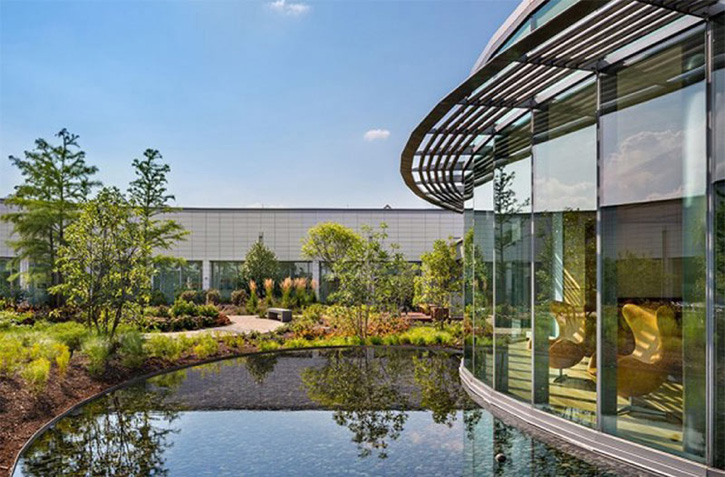
Credit: Oliver Heath Design
The 14 principles of biophilic design
The 14 principles of biophilic design that were established by Terrapin Bright Green in a publication called “14 Principles of Biophilic Concept” are grouped into three categories:
- Nature in Space
- Natural Analogies
- Nature of the Space
These principles, which are based on science and psychology, express the relationships between nature, human biology and the design of the built environment and allow the recognition and articulation of the individual elements that constitute the biophilic conception.
Nature in Space
Nature in space refers to the presence of natural elements in an interior, such as plants, shells or aquatic elements. Direct sensory contact with nature in an interior space is not necessarily synonymous with proximity. Interaction with the natural world can also be indicated by more abstract features: whether by natural light or changing light throughout the day, the stimulating visual presence of nature, or by the use of plants, fountains, natural air flow or breezes, sounds or perfumes. Design using this group of principles will create direct and meaningful links to the natural elements through diversity, movement and multi-sensory interactions.
The 7 elements of this category are:
- Visual link with nature – The stimulating view of elements from nature, living systems and natural processes. For example a window overlooking a garden, potted plants or flower beds, green walls and green roofs.
- Non-visual link with nature – Auditory, tactile, olfactory or taste stimulations that deliberately and positively refer to nature and which recall the connection to nature.
- Non-Rhythmic Sensory Stimulation – The rich sensory stimuli of nature from both coherent and unpredictable movements, such as gentle oscillation of grass or leaves in the breeze, or ripples on the surface of the water .
- Thermal Variability and Air Renewal – Subtle changes in temperature, humidity, airflow that mimic natural environments.
- Presence of Water – To be able to see, hear or touch it.
- Dynamic and Diffuse Light – Variations in intensity of light and shadows that change during the day can create conditions that resemble nature.
- Link to natural systems – The proximity of natural processes, such as seasonal changes, that remind us of healthy ecosystem processes.
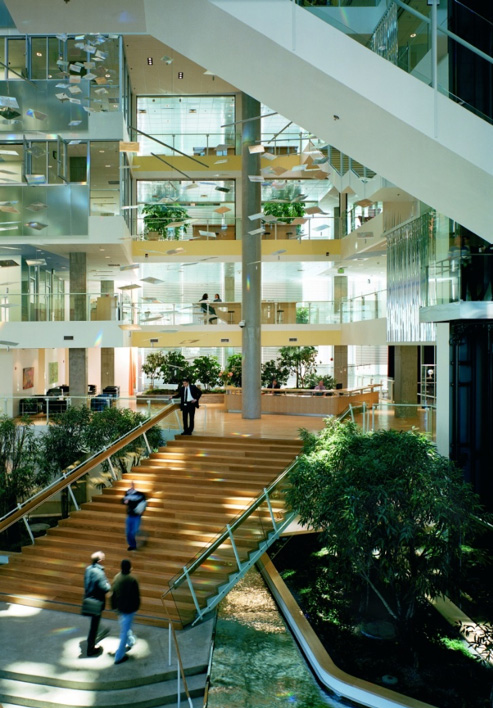
Credit: Behnisch Architects; Phototographer: Anton Grassl/Esto
Natural Analogies
This is a more “intellectualized” approach to biophilia. Natural analogies refer to art and forms inspired by nature (for example: a luminary that looks like a plant or a sculpture that looks like an animal). It’s about recreating shapes, spaces, biomorphism and or using natural materials that mimic nature to create a serene and healthy space.
With the principles of Natural Analogies, we use elements that are in indirect connection with nature to create a signal that evokes to the brain the same feeling of well-being as that evoked by the natural world. By imitating subtle details present in nature using textiles, illustrations, lights, shapes or patterns, we can recreate the biophilic link that exists between the human and the open spaces, and by therefore stimulate a deep sense of well-being.
Larger biophilic connections can be obtained by combining various elements of this category:
- Biomorphic Forms and Patterns – Symbolic references to patterned, textured or numeric patterns that are common in nature.
- Material link with nature – The use of materials, grains, textures and design elements that distinctly reflect the environment to create an impression of the natural world as a whole.
- Complexity and Order – An abstract but visually appealing concept that uses the multitude of sensory information derived from the symmetries, hierarchies and geometries found in nature, within the design.
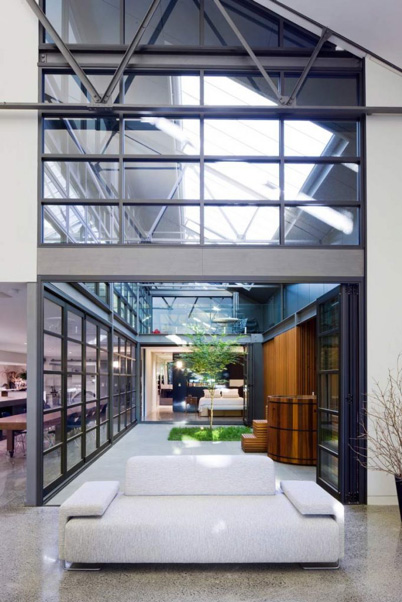
Credit : Contemporist
Nature of the Space
Nature’s conceptions of space define the relationship that man has with the building, the room, or the space around it. In other words, this concept concerns spatial configurations in nature. The human is fascinated by the unknown or the light danger. There exists in each one the innate and acquired desire to be able to see beyond its immediate environment. The Nature of Space means that space itself resembles nature.
Obscure views, revealing patterns, installations and moments of mystery or imminent peril stimulate and maintain the interest and enthusiasm of humans. The principles of Nature of Space can have a maximized impact by amalgamating them with those of Nature In Space, and Natural Analogies.
The Nature of Space encompasses four models of biophilic design:
- Perspective – A breathtaking view made for monitoring and forecasting. Principles using perspective take into account a wider angle or a broader view of one’s immediate environment. Interior design elements that best represent this principle include the addition of balconies, oversized windows or skylights, mezzanines, open spaces or desks, partitions and glass or transparent walls, and rooms with uninterrupted views.
- Refuge – A place to withdraw from environmental conditions. the principle of Refuge is based on the fact of being able to have an overview of its environment, while being sheltered, in protected situation, far from the effervescence of the zones of activity. An acoustic cocoon in an open-air office, for example, provides a safe haven for concentration, away from noise or outside stimuli, while still being able to observe the world around you.
- Mystery – The promise of a wealth of information, through partially obscured views or other sensory dispositions that encourage the individual to travel deeper into the environment. The success of the Mystery Principle lies in the anticipation of what might appear at the corner of the wall, provoking a strong and undeniably pleasant human reaction.
- Risk – An identifiable threat coupled with dependable security. Whether it’s a cliff-top hiking trail or a glass wall overlooking a cityscape, the Risk / Peril principle triggers a human adrenaline rush on the threshold of security.
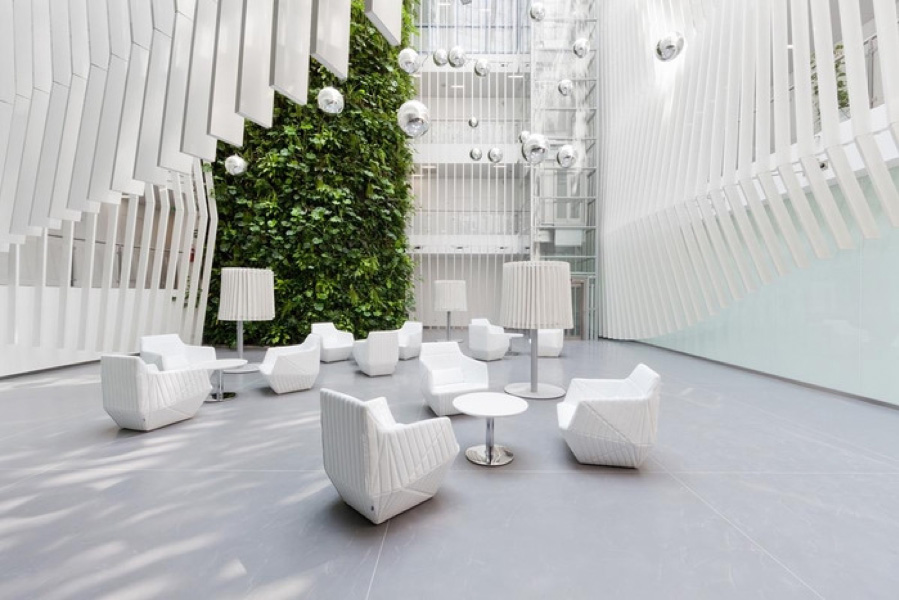
Credit : Getty Images
Biophilic design and workspaces
Biophilia emphasizes the importance of contact with nature, the benefits of which are manifold. Indeed, biophilic design can reduce stress, blood pressure and heart rate, while increasing productivity, creativity, clarity of thought and the feeling of well-being of employees. Companies such as Apple, Google, Etsy, Airbnb, Amazon and Microsoft go beyond traditional office installations and invest heavily in biophilic design elements.
Over the last 35 years, many studies have been conducted on the benefits of biophilic design in office design: these principles have been shown to improve focus, engagement (attraction and retention of staff). in the “talent war” and reduction of absenteeism), productivity (8% increase), well-being (13% increase), creativity and cognitive abilities of workers.
Promoting employee well-being is a competitive advantage for employers, spending time outdoors in the office is an essential part of employee retention. Employees say they feel rejuvenated and energized in biophilic spaces. They are inspired by plant life, natural lighting and other natural elements of design.
In the workspaces this will also be reflected by the evocation of nature by geometric shapes, trompe l’oeil, juxtapositions of materials, angles, evocations of trees-storage, meeting rooms-garden or by desks designed in a geometric form in a French garden style.
In addition to benefiting employees, green spaces promote biodiversity. The variety of plants they house can attract different species of insects and birds. Thanks to good water retention by plants, rainwater recovery is facilitated. In addition, buildings with access to an outdoor area often have a higher resale value. Creating a space outside, so you can enjoy nature, is a very good way to make every square foot profitable.
Although at the cutting edge of green building design, the biophilic design inherent in humans has not yet taken off. By 2050, 66% of the developed world will be urbanized. Each human will devote about 11 hours a day to technology and spend up to 93% of his time in indoor spaces. It is vital today for the health and well-being of every human to benefit from this biophilic knowledge in the planning of urban living and working environments.
Workspaces more than any other form of real estate lend themselves to a design oriented towards nature. And this “love of nature” brings companies specialized in the development of workspaces like Lib. to propose new lines, new transformations within offices for the well-being of employees.
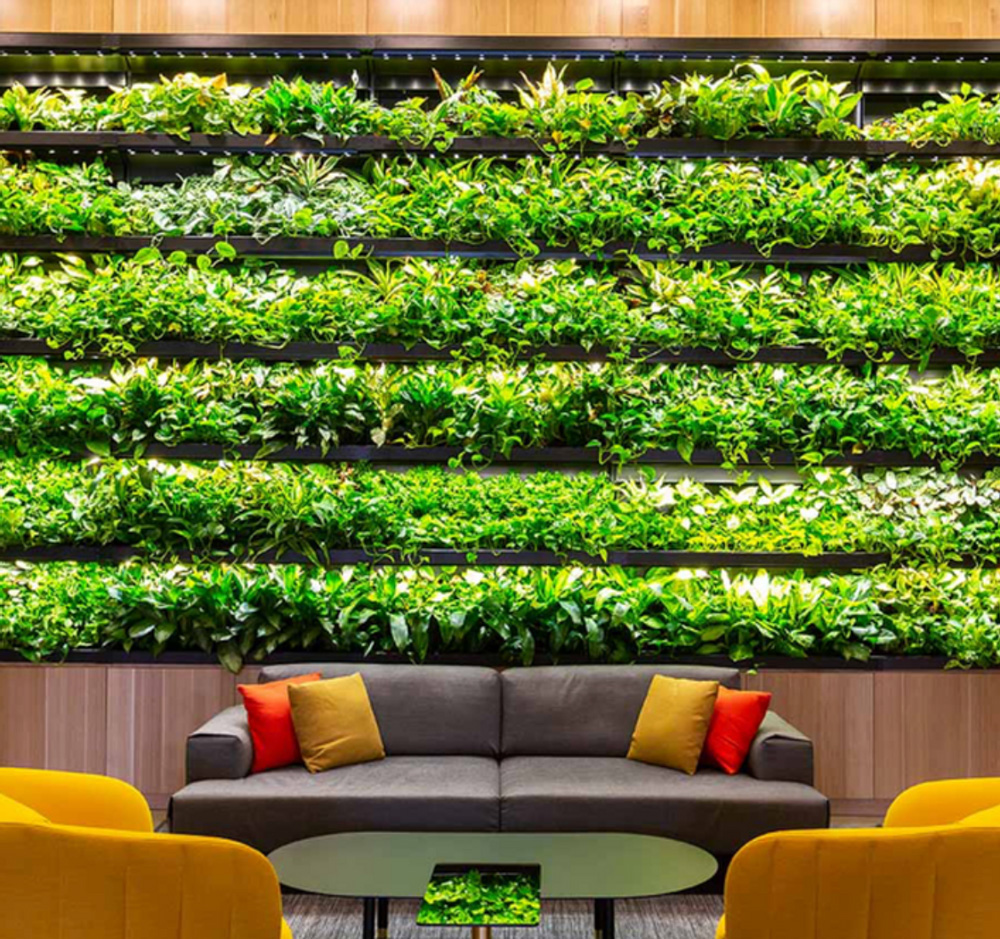
Sources : Wikipédia
